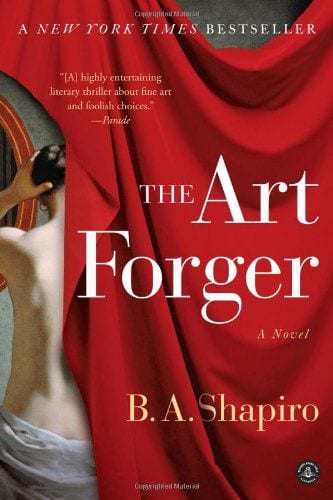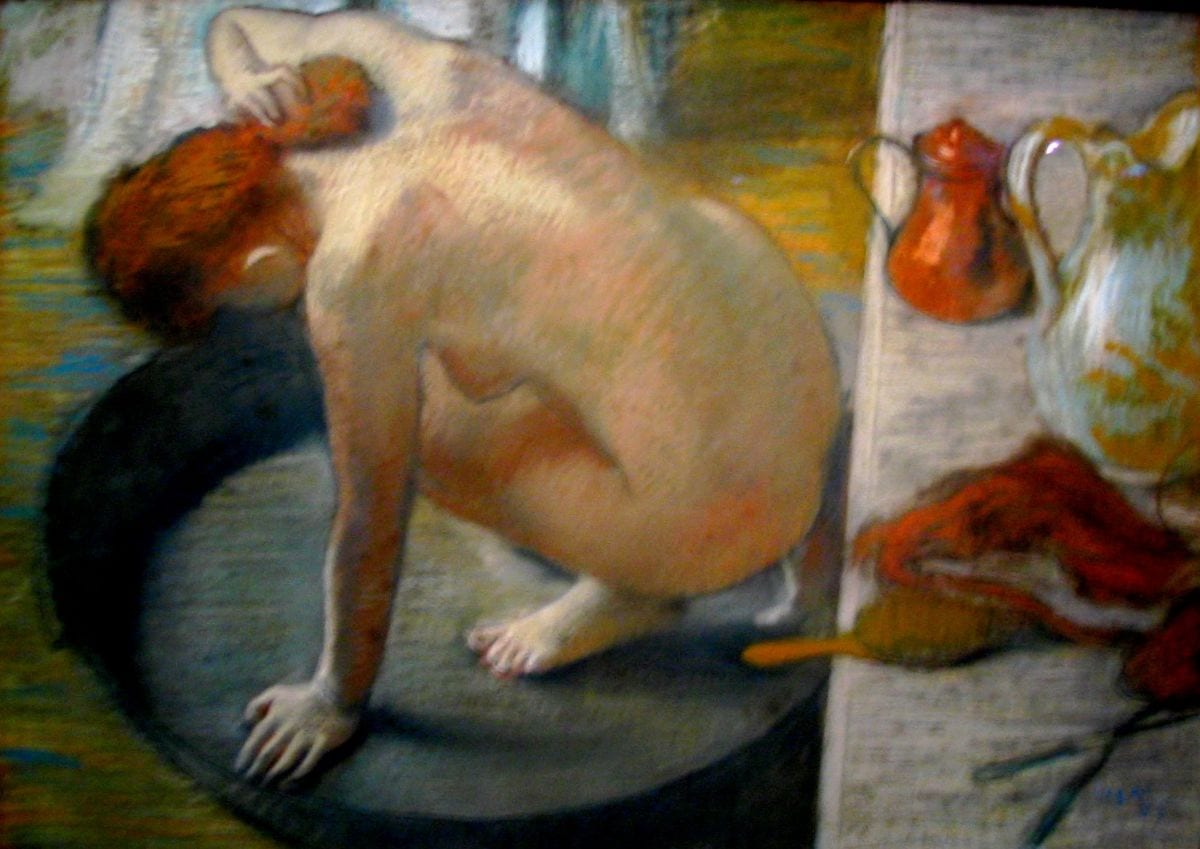
“The Art Forger” by B. A. Shapiro
Algonquin Books, 2012, 355 pages
Available in paperback
If you are even remotely contemplating becoming a forger of fine art masterpieces, this is the book for you. If you love the Impressionist painter Edgar Degas (although he would likely quibble about being grouped with other Impressionists of the last half of the 1800s), I think you will find this book engrossing. If you like a good mystery that is part treatise on today’s upscale art world and part who-done-it, you won’t be able to put this book down. Or if you are looking for an author who has cleverly hooked her imaginary world to a single, memorable factual occurrence, you’ve found her. And if you are just looking for a good read, here it is.
This is the sad but factual occurrence from which B. A. Shapiro springboards her story: in the early morning hours of March 18, 1990, a pair of thieves disguised as Boston police officers entered the Isabella Stewart Gardner Museum and roamed the Museum’s galleries, stealing thirteen works of art. They gained entry into the Museum by posing as police officers and stating that they were responding to a call. The guard on duty broke protocol and allowed them entry through the Museum’s security door. This much is true.
It is now 2011. Enter Claire Roth, a young Boston artist who makes a living copying famous works of art, which is legal as long as they are labeled as copies. What she gets herself into in this book is a painting of a different color. (Oh, come on. I couldn’t not!) In a deal that brings our heroine much angst, some joy, and lots of uncertainty, she agrees to forge a painting that she is led to believe is one of the paintings taken in the 1990 heist that’s been missing for the last 20 some years. If her work is successful and is authenticated by art experts, she in return will be granted a one-woman show of her own work in a prestigious Boston gallery.
What boosts “The Art Forger” by B.A. Shapiro from being simply a good read to a great one is the ingenuity demonstrated by the author who created the idea of a painting that might have been included among those that were stolen. Once you become engrossed with Claire’s emotional entanglement with the painting she has been presented to forge, I dare you not to Google it. Her reaction to its overwhelming presence in her apartment is nearly hedonistic.
As the mystery surrounding the painting unfolds, the layers of intrigue mirror the paint layering technique that Degas made famous during his “Nudes After a Bath” period. Each layer, both of story and of paint, would be not much out of the ordinary. Taken together, however, the layers (and there are many) play off one another, entwining, enhancing and enfolding. To further underscore the complexity of the process and the story, Shapiro contrasts that intricacy with the simple reality of Claire’s passion for the essence of art and art making. Both are powerfully detailed.
“The Art Forger” is divided roughly into two sections. The first is slow and purposeful, mirroring the process involved in re-creating Degas’ layered technique. The second part picks up speed until it reaches nearly breakneck speed (for the Boston art scene, anyway) and races to the conclusion.
Claire, as the main character, is wonderfully flawed. Though her audible dialog with others in the cast of characters is predictable, her internal conversations with herself are witty and compelling. The internal Claire is wrought with misgivings about her love life (and yes, there is a romantic subplot winding its way through this book), her art, and her moral compass.
Is “The Art Forger” a perfect book? Not nearly so. There is an interlude of mistaken arrest that comes off jerky and unnecessary to the plot’s progression. There are times when the attention to detail is a yawner. I didn’t really need the chemistry lessons. I didn’t like it in high school. I like it even less now.
But I’ll tell you this. I loved “The Art Forger.” Remember when we all still read books we held in our hands? Remember how we would hold them closed between our hands and tilt them toward us so we could see where our bookmark was, and how we would gauge how far we were through the book based on the placement of said bookmark? I did that thing with this book, because I didn’t want it to end. I knew I would miss internal Claire when the book drew to its conclusion, and I did. I think you will, too.
Read B. A. Shapiro’s “The Art Forger” because you want to know more about Edgar Degas. Read it because you want to know more about art forgery. Read it because you want a good book to read.




